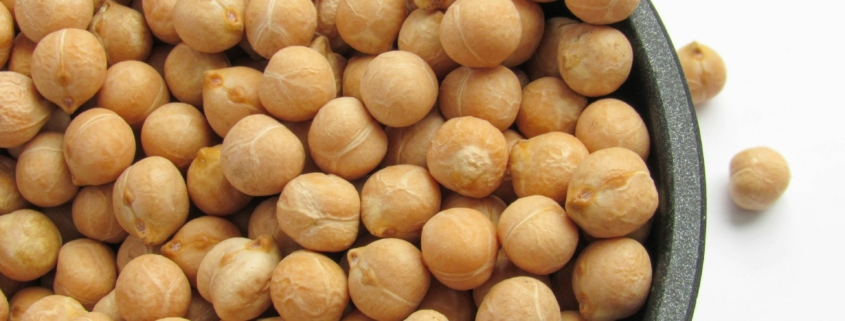Chickpeas have carved a niche for themselves in the agricultural landscapes of Australia. Known for their nutritional benefits and versatility, chickpea cultivation is gaining momentum among farmers. To ensure a successful harvest, understanding the germination process is key. Germination is the phase where seeds develop into plants, and it plays a pivotal role in determining the yield. Without strong germination, the potential for a robust crop diminishes significantly.
Seed treatments offer a proactive way to enhance germination. These treatments act as a protective barrier, stimulating the seed and warding off potential threats that can disrupt the delicate process of growth. By embracing seed treatments, farmers can optimise the conditions for chickpea seeds to sprout healthily, leading to a fruitful harvest.
Understanding Chickpea Germination
The journey from seed to plant begins with germination. In this stage, the chickpea seed absorbs water, activating the enzymes needed for growth. The seed’s coat breaks open, allowing the root to anchor itself in the soil, followed by the shoot reaching towards the sunlight. This foundational stage can face obstacles such as poor soil conditions or inadequate moisture.
Several factors influence chickpea germination:
1. Water Availability: Seeds need a steady supply of moisture to begin germination. Insufficient water can delay or completely halt the process.
2. Soil Temperature: Chickpea seeds prefer a warm environment. Cold soils can slow down growth, whereas optimal temperatures can accelerate germination.
3. Seed Quality: High-quality seeds free from damage or disease tend to germinate better than compromised ones.
Farmers often encounter challenges during germination, such as pest attacks or inconsistent weather. Addressing these concerns early on sets the farm up for greater success in the growing season. Understanding these factors and their impact can lead to more informed decisions regarding cultivation practices.
By focusing on germination, farmers can lay a solid foundation for their chickpea crops. With the introduction of strategic seed treatments, the resilience of these seeds can be further enhanced, increasing the likelihood of achieving a bountiful harvest. As crucial as these initial steps are, integrating treatments also brings its own set of pros and cons.
Types of Seed Treatments for Chickpea
There are various seed treatments available to boost chickpea germination. These treatments come in different forms, each with its own benefits and considerations.
1. Chemical Treatments: These involve applying fungicides or insecticides directly to the seed. They shield the seeds from diseases and pests at the early stages. While effective, it’s vital to handle with care to avoid any negative impact on the environment.
2. Biological Treatments: These use natural microbes to protect seeds. Such treatments enhance soil health and create a symbiotic environment for the seeds to thrive. They may take longer to show effects but often provide a sustainable option.
3. Physical Treatments: Mechanical or thermal methods, such as steaming, can remove pathogens from seeds. This approach is chemical-free and safer for those seeking more natural practices.
An example of cutting-edge technology is the use of seed coating with materials that improve water retention, helping seeds to germinate even in less than ideal conditions.
Benefits of Seed Treatments in Enhancing Germination
Seed treatments provide multiple benefits, ensuring healthier and more vigorous seeds. Here are key advantages for chickpea crops:
1. Improved Seed Health: Treatments fortify seeds against diseases, boosting their chances of successful germination.
2. Enhanced Vigor: Treated seeds tend to sprout more robustly, leading to stronger seedlings.
3. Better Pest Management: They also keep early threats at bay, securing the young plants against damage.
In Australia, farmers have seen positive outcomes in yield and overall plant health by incorporating these treatments. Although detailed statistics aren’t necessary, it’s clear from practical experiences that implementing these methods makes a difference.
Implementing Seed Treatments in Your Farming Practice
Applying seed treatments involves careful planning and execution. Here’s a basic guide to ensure effective application:
1. Select the Right Treatment: Consider your specific field conditions and the challenges you’re facing.
2. Follow Instructions: Always adhere to recommended application rates and safety guidelines.
3. Monitor Conditions: Keep an eye on soil conditions and climate to time the treatment optimally.
4. Test Small Batches: Before large-scale application, test the treatment on a small batch to observe its effectiveness and adjust if needed.
When choosing treatments, consider both your goals and the practical aspects of your farming operations. Avoid common pitfalls like over-applying or ignoring label instructions, which could lead to reduced effectiveness or harm to the environment.
Enhancing Your Chickpeas for Success
The right seed treatments can be transformative for chickpea germination, crafting a sturdier foundation for the plants to thrive. By understanding and applying these methods, you ensure your crops are well-prepared to resist the hurdles they might face in their growing journey. These treatments hold the promise of healthier plants and better yields, setting you up for a successful harvest season.
To give your chickpea cultivation a competitive edge, consider exploring the benefits of using seed treatments to enhance growth and resilience. Learn more about how to successfully grow chickpea in Australia and see how Shepherd Grain can support your farming success with expert advice and high-quality seed treatments.



